Since 2013, 1 February has been World Hijab Day. It was started by a New York woman, Nazma Khan. Khan moved to New York from Bangladesh with her parents at the age of eleven. She was the only child at her school wearing the hijab and was bullied. It seems from her account that at least one of her teachers participated in this instead of protecting her. Things got worse when she attended university – she was identifiably a Muslim, living in New York, and 9/11 had just happened.
Khan did not let her bad experiences define her and embraced the hijab by starting an on-line business that sold the scarves. This resulted in many woman contacting her with stories of abuse they’d suffered while wearing the hijab. These stories are appalling. What’s worse is that many of the stories come from children who were being abused at school. No child should have to suffer like this – it is the responsibility of educators to make school a safe environment for all children.
Khan decided to try and do something about the situation and in January 2013 set up a website and Facebook page declaring 1 February 2013 World Hijab Day. Within a few days she had support from all over the world. It now has support from 124 countries, including New Zealand, and their literature has been translated into 56 languages. Her stated aim is to,
“… foster religious tolerance and understanding by inviting women (non-Hijabi Muslims/non-Muslims) to experience the hijab for one day”.
Khan is now a frequent speaker at universities, high schools, and religious institutions where she talks about her experiences as a woman wearing hijab in America from the time she was eleven. At that age she says:
“I chose to cover up to obey my Creator and make a statement about my identity as a Muslim woman.”
She further states on her website that World Hijab Day is:
“… in recognition of millions of Muslim women who choose to wear the hijab and live a life of modesty.”
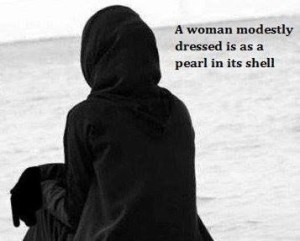 These last two statements are where she and I come unstuck. Firstly, it is my opinion that an eleven-year-old, no matter how intelligent (and Khan is extremely intelligent) does not yet have the critical thinking ability to decide whether or not she is a Muslim, Christian, or any other religion, or an atheist. Further, I have a problem with the implication that a women who chooses not to wear the hijab, whether or not she is a Muslim, is not modest. There’s also the judgment of what is and is not modest behaviour, and who has the right to make that decision. This tendency to judge can be seen in the campaign with one of their most prominent “examples” being former Playboy model, Raisyyah Rania Yeap, and the display of images such as the one above.
These last two statements are where she and I come unstuck. Firstly, it is my opinion that an eleven-year-old, no matter how intelligent (and Khan is extremely intelligent) does not yet have the critical thinking ability to decide whether or not she is a Muslim, Christian, or any other religion, or an atheist. Further, I have a problem with the implication that a women who chooses not to wear the hijab, whether or not she is a Muslim, is not modest. There’s also the judgment of what is and is not modest behaviour, and who has the right to make that decision. This tendency to judge can be seen in the campaign with one of their most prominent “examples” being former Playboy model, Raisyyah Rania Yeap, and the display of images such as the one above.
There is, for me, an issue with whether wearing the hijab can ever be a genuine choice. However, leaving aside the question of determinism, I believe for many women the choice to them at least is real. How much that choice is influenced by religious conditioning is another matter. Back on 10 December (ironically, International Human Rights Day) Sci-Lo Green wrote an interesting piece on his site called To Veil or Not to Veil. He discusses whether the hijab is incompatible with feminism in response to a discussion between Yasmin Alibhai-Brown and Nihal Arthanayake on BBC radio following the release of Alibhai-Brown’s book Refusing the Veil.
An Amazon customer review of Refusing the Veil by J Baldwin includes the following:
“Around the World,” [Alibhai-Brown] writes on page 4 of ‘Refusing the Veil’, “Islam has been distorted, corrupted and sullied by male theologians, chauvinist leaders and fake fakirs … I truly, deeply and keenly believe the veil, in all its permutations, is indefensible and unacceptable.” … Alibhai-Brown provides a well reasoned and systematic dismantling of the many arguments that are put forward by those who seek to defend the wearing of the veil – what Alibhai-Brown describes as this “mournful shroud“, “the Taliban-approved kit“, “this sexist garb” and “this obvious symbol of oppression“.
Award-winning journalist, ex-Muslim, atheist and feminist Maryam Namazie is in no doubt either. In response to a commenter on a blog post she wrote called The hijab is not cultural, it’s compulsory!, she wrote:
Defending the veil as a question of ‘choice’ is good for those who want to sleep well at night without feeling bad about their position on things. However it’s a cop-out. Look, socially speaking – looking at the larger scheme of things – there is hardly any choice involved. Even if it’s not the rule, there is much intimidation and pressure surrounding its use. Even in Britain where there is freedom to choose what one wears, the Muslim Council of Britain has said there is no choice in the matter. The veil is a pre-requisite to be a good Muslim woman. … In my opinion it is a method of controlling women. It is instituted so that women do not create fitna or chaos in society. It is like the chastity belt or footbinding. It is about controlling women and so is fundamentally wrong. Even if you find women who agree [sic] with it – as you always will – is it right?
Also in Britain, Godless Spellchecker recently interviewed Aliyah Saleem, a campaigner for One Law for All, a organisation that opposes all use of Sharia in Britain. Saleem was expelled from her Muslim girls’ boarding school as a teenager because she had a camera. The reason? She might take a photo of one of the other girls without her hijab and show it to people outside the school. In this case too, it seems to me that the hijab is more a sign of oppression than freedom.
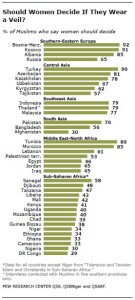 When Muslims in non-Western countries were asked whether it was a woman’s choice whether or not she wore the veil, the response varied greatly by country. In some the majority thought it should be a woman’s decision. In others they thought it should be either be a man’s decision, or compulsory.
When Muslims in non-Western countries were asked whether it was a woman’s choice whether or not she wore the veil, the response varied greatly by country. In some the majority thought it should be a woman’s decision. In others they thought it should be either be a man’s decision, or compulsory.
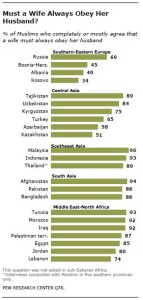 However, if a woman’s decision differs from her husband’s, it’s unlikely she will stand up to him if he decides she should be veiled. Even in Bosnia-Herzegovina where 92% think it should be a woman’s decision whether she wears the veil, 45% think a wife must always obey her husband. In those Muslim-majority countries where almost everybody agrees a woman must obey her husband, there is little likelihood that what she wears is her own choice, especially when her clothing is something that is so frequently the subject of discussion among scholars of Islam.
However, if a woman’s decision differs from her husband’s, it’s unlikely she will stand up to him if he decides she should be veiled. Even in Bosnia-Herzegovina where 92% think it should be a woman’s decision whether she wears the veil, 45% think a wife must always obey her husband. In those Muslim-majority countries where almost everybody agrees a woman must obey her husband, there is little likelihood that what she wears is her own choice, especially when her clothing is something that is so frequently the subject of discussion among scholars of Islam.
According to Al-Islam.org:
“Islam has strongly emphasized the concept of decency and modesty in the interaction between members of the opposite sex. Dress code is part of that overall teaching.”
They state there are two verses in the Qur’an that are apparently particularly important when it comes to female dress. The first is in chapter 24:
Verse 31:“Say to the believing women that: they should cast down their glances and guard their private parts (by being chaste) and not display their beauty except what is apparent, and they should place their khumur over their bosoms…”
The part relating to the direction of the glance are known as “the hijab [veil] of the eyes”. (The verse before stipulates a similar stricture for men.) The next phrase in the verse is what has been distorted (in my humble opinion) as meaning Mohammed requires women to be covered, in some case to the extent of a niqab. (See below for an explanation of the names of the different forms of hijab for women.)
This is what Al-Islam.org says the verse means:
According to the commentators of the Qur’an, the women of Medina in the pre-Islamic era used to put their khumur over the head with the two ends tucked behind and tied at the back of the neck, in the process exposing their ears and neck. By saying that, “place the khumur over the bosoms,” Almighty Allah ordered the women to let the two ends of their headgear extend onto their bosoms so that they conceal their ears, the neck, and the upper part of the bosom also.
This is confirmed by the way the Muslim women of the Prophet’s era understood this commandment of Almighty Allah. The Sunni sources quote Ummu ’l-mu’minin ‘A’isha, the Prophet’s wife, as follows: “I have not seen women better than those of al-Ansar (the inhabitants of Medina): when this verse was revealed, all of them got hold of their aprons, tore them apart, and used them to cover their heads…”
The meaning of khimar and the context in which the verse was revealed clearly talks about concealing the head and then using the loose ends of the scarf to conceal the neck and the bosom. It is absurd to believe that the Qur’an would use the word khimar (which, by definition, means a cloth that covers the head) only to conceal the bosom with the exclusion of the head! It would be like saying to put on your shirt only around the belly or the waist without covering the chest!
The second Qur’anic verse that Islamic scholars say refers to women’s dress is chapter 33, verse 59, which reports Allah giving the following command to Mohammed:
“O Prophet, tell your wives and your daughters and the women of the believers to bring down over themselves [part] of their jalabib…”
Al-Islam has this to say about the above verse:
Jalabib … means a loose outer garment. See any Arabic dictionary like Lisanu ’l-‘Arab, Majma‘u ’l-Bahrayn or al-Munjid.
Al-Munjid, for instance, defines jilbab [singular of jalabib] as “the shirt or a wide dress …” While al-Turayhi, in Majma‘u ’l-Bahrayn, defines it as “a wide dress, wider than the scarf and shorter than a robe that a woman puts upon her head and lets it down on her bosom…”
This means that the Islamic dress code for women does not only consist of a scarf that covers the head, the neck and the bosom; it also includes the overall dress that should be long and loose.
So, for instance, the combination of a tight, short sweater with tight-fitting jeans with a scarf over the head does not fulfil the requirements of the Islamic dress code.
Al-Islam.org is quite clear that the hijab is not enough for them to denote a Muslim woman observant – her whole body must be covered by a sack. They go on to outline how the Sunnah, which describe the way an observant Muslim should live their life based on the Qur’an and the teachings of Mohammed, deals with women’s dress. They finish their explanations with the following statement, in bold:
The two verses discussed above put together clearly show that hijab, as a decent code of dress for Muslim women, is part of the Qur’anic teachings. This is also confirmed by how the Prophet Muhammad (s.a.w.) understood and implemented these verses among the Muslim women. This is further confirmed by how the Imams of the Ahlul Bayt (a.s.), and the Muslim scholars of the early generations of Islam understood the Qur’an.
It is an understanding that has been continuously affirmed by Muslims for the last fourteen centuries. And, strangely, now we hear some so-called experts of Islam telling us that hijab has nothing to do with Islam, it is just a cultural issue and a matter of personal choice!
I find the whole idea of women needing to cover up in order to avoid lustful feelings to be extremely insulting to men. People learn from childhood when it is and isn’t an appropriate time to display feelings of lust. Turning this normal process into one filled with guilt, fear and religious sanctions damages relationships between men and women. It also puts any blame for those men who don’t learn how to behave appropriately onto women, instead of with themselves.
So I support the idea that Nazma Khan, and any other woman who chooses to wear hijab, should be able to do so without consequence. Whatever a woman (or man for that matter) chooses to wear, she should not be subject to insults, judgment, bullying, or any other negative behaviour. I further support her aim of promoting tolerance and understanding between different people.
However, I will not be wearing a hijab on 1 February. My sympathies are with the millions of women who do not have the choice what they wear. Those women whose gender means they aren’t educated to their full potential and have few, if any, options what path their lives will take. Those whose minds aren’t even free enough to imagine throwing off the garb and religion that imprisons them.
- Hijab is Arabic for veil. The type usually worn in the West is a square scarf that covers the hair and neck only.
- The Khimar or Khumar is a veil that hangs down to the waist, covering the hair and neck.
- The Shayla is most popular in the Gulf states. The scarf is wrapped around the head and tucked or pinned at the shoulders.
- The Al-Amira is a two-piece veil – a close-fitting cap and a tube-scarf.
- The Chador is a full-body cloak, often with a headscarf underneath. It is most common in Iran.
- The Niqab is a face-covering that leaves only the eyes clear and is further covered by a long veil. Sometimes it is worn with an eye-veil too.
- The burqa covers the whole head, face and body. There is a screen at eye level.
The images in slide show and some of the captions are from this BBC News article.
If you enjoyed reading this, please consider donating a dollar or two to help keep the website going. Thank you.

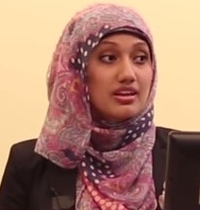
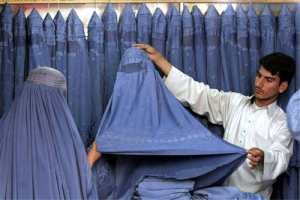
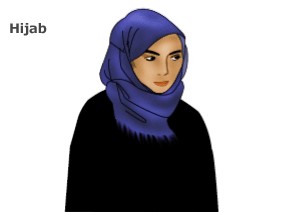
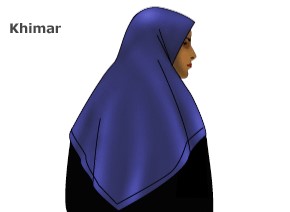
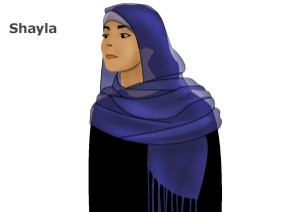
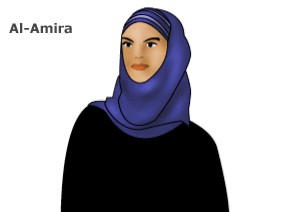
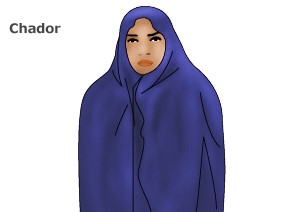
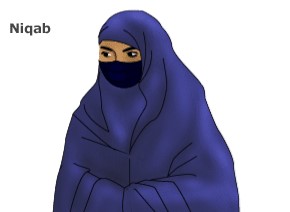
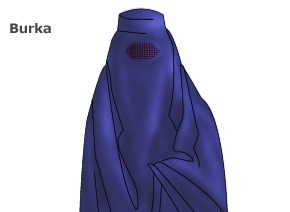
I’d prefer to see a World Men-wear-a-Hijab Day; let them spend just one day having to cover up the way women do.
Ha ha! Excellent idea!
Very go9d article, Heather.
/@
Thanks Ant 🙂
Well said, Heather!
Thanks Diana 🙂
Hi Heather. You do a great job here of walking the fine edge between the freedom of speech and the freedom of choice. I will uphold a woman’s right to wear a body covering sack or a man’s right to wear a bikini. I do not care as long as it is voluntary and meets some level of good manners. But when the freedom to choose is removed either tacitly or outright then I am opposed. Good post. As always!
Cheers Dennis 🙂 For several hours I’ve been meaning to make a small change to the last part of post so that I endorse men’s freedom too – I will do it now!
Dom, I really eyenojd this article. I spent a month in the Middle East (Lebanon, Syria, Jordan and Egypt) in the summer of 2006, and I quickly learned a lot about the hijab. From my own knowledge, I think the reasons differ for why women wear the hijab depending on their location. The women I spoke to wore their veils (there was a wide variety of coverings from just head scarfs to full-body veils without eye slits) for many reasons, ranging from the fact that a veil offered women a sort of protection from the advances of men’ to women being forced to wear them by very religious/traditional husbands/fathers.What I liked about the article is that it was offering a reason why women choose to remain veiled once in North America or Europe. I think that, for a lot of these women, it offers a sense of modesty that is often lost in our culture. Not only are they keeping a part of their body hidden from the world, but the clothing they wear is different too less form fitting and revealing. An important part of why girls and women decide to wear a veil is because they have a choice, not many women do in Arab countries, it’s just a given that you will wear some sort of head covering when out in public. It also is really affected by the type of background these women come from, if they’re coming from less traditional families the type of head covering they would wear is very different, with a variety of colour options and styles so it can be worn more as an accessory of sorts instead of the full head coverings, which I often heard referred to as prisons’.Also, I think women who have grown up in Arab countries view the hijab differently than women who have either never lived in those countries or left at a young age. If they never had to experience the political connotation of what the hijab meant during the extremist movements of the 1980s in the Middle East or the remnants of those governments still in power today, it would have a completely different meaning to them.
An excellent analysis of a vexed question. If wearing one of the various versions of the veil were truly voluntary, I would see no problem with it. However it seems that many women wear it due to social and/or religious pressures. As well these doctrines seem to blame women, especially those who do not wear the veil, for the bad behavior of some men. This mirrors the arguments sometimes heard in the West that a rape victim was ‘asking for it’ because she was wearing a short skirt!
So I support the right of women to veil without negative reactions from those of us who do not do so, and I also support the right of women to dress as they see fit without attack be it verbal, social or physical.
Thanks Barbara – always nice to have new people join the conversation. 🙂
I fully support anyone’s right to wear what ever clothing they wish to wear, however it MUST be their choice, not enforced by others by any means, religious pressures, social pressures, or any other kind of pressure.
As for it being a means to stop men’s lustful thoughts, not only is that demeaning to men but, if those men cannot control their own bodies surely it is up to them to find a way to stop those thoughts without resorting to forcing others to take action.
It is insulting to men to think they’re not capable of controlling themselves unless a woman is encased in a shroud. Besides, estimates (there are no official statistics for obvious reasons) by NGOs are that women in societies where they are required to dress in a certain way have much higher levels of sexual assault and rape. Basically, men who respect women don’t rape them.
Hijab(covering hair/head) is not in the Quran
http://quransmessage.com/articles/hijaab%20FM3.htm
It is nothing wrong with practising Hijab as long as the woman know that Hijab is not in the Quran
http://quransmessage.com/articles/hijaab%20FM3.htm